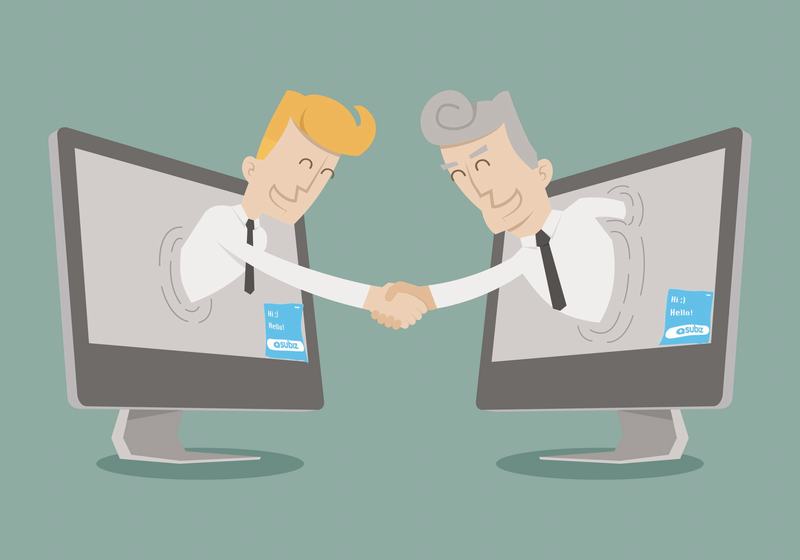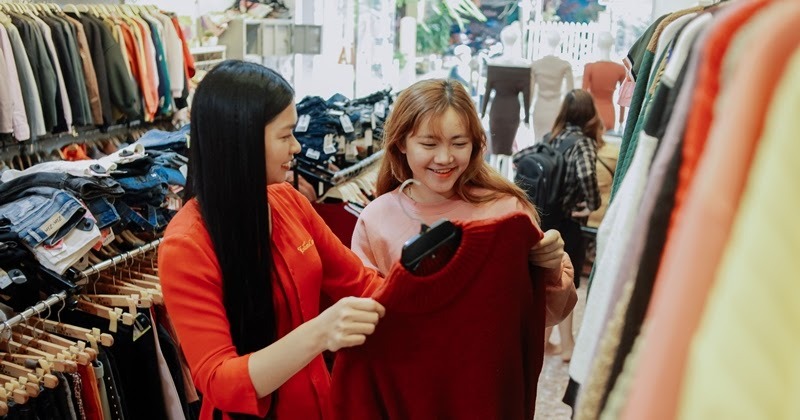Understanding the characteristics and needs of each customer will help businesses create better shopping experiences and strengthen customer relationships. In this article, we will explore the 9 different types of customers in the buying process and how businesses can meet each type of customer.
Bargain hunter
The factor that influences the buying decisions of bargain hunters is price. They are always looking for “bargains” and are ready to buy when they see a suitable price. They will sometimes buy things that they do not need in the first place.
These people are not usually loyal to a particular Brand but they are the most common type of customer.
A 2020 Statista survey found that 88% of shoppers have used discount codes, and 60% of online shoppers said discounts have become even more important during the COVID-19 pandemic.
So how do you reach bargain hunters?
Bargain hunters may spend time looking around, comparing prices, and won’t buy until they find the best possible price, so running promotions and discounts can be the best way to get them to consider your brand.
However, this method has two major disadvantages:
- The first, Frequent discounts will definitely affect the profit margin of the business.
- Monday, This method will foster a bad habit of customers waiting for a sale to buy.
So, try to highlight the value your product brings and make bargain hunters feel how much they will save when shopping.

The type of buyer who loves to hunt for bargains.
Savvy Buyer
Smart shoppers are the most common type of customer, but the hardest to convert. They read descriptions, reviews, compare prices, etc., and are sure to have a good understanding of the products a business offers.
Research from GE Capital Retail Banking shows that 81% of shoppers will conduct online research before making a purchase decision.
As a result, they know exactly what they need and are able to negotiate the best deal. This can make it difficult for businesses to target and implement marketing strategies.
How to reach informed shoppers?
- Create urgency and drive demand by showing them the popularity of products through inventory levels or notifying them about products that are almost out of stock,…
- Make sure your products are reviewed good because this group of people rarely make a purchase decision without first searching online for information about the product. Research has shown that reviews are 12 times more trustworthy than other marketing materials.
- Increase product visibilitybrand on online channels through SEO techniques, Advertising, … to build brand reputation as well as customer trust.
Impulse buyers
Impulse buyers are quick decision makers and are highly likely to convert. They are a marketer’s dream because they don’t need much convincing and their buying behavior is based on instant gratification.
Surveys show that 52% of Millennials are more likely to make impulse purchases than other generations. A person will make an average of 3 unplanned purchases out of 4 visits to a store.
With impulsive buying behavior, this group of people will not be loyal to a certain brand and therefore it is very difficult for businesses to accurately target their marketing.
How to reach impulse buyers?
- Make the shopping experience seamless because impulse buyers often buy on a whim and expect a quick, easy process.
- Offer last-minute add-ons because this group is very receptive to upselling and recommendations. However, make sure the product recommendations are relevant and personalized.

The impulse buyer type.
Indecisive Buyer
These buyers are often uncertain and find it difficult to pinpoint exactly what they want. This may be due to a lack of product information or, conversely, they are overwhelmed by too much information.
How to approach indecisive buyers?
The best approach is to find and tap into the specific needs of this group of people, and then provide the necessary information to facilitate the buying process.
Customers love to chat
This group of customers loves to talk and chat. They are more likely to reveal exactly what they want, providing opinions and thoughts while exploring products.
Talking and discussing also shows these customers want your input and they need it to make decisions.
These are enthusiastic and quite approachable customers but sometimes you will be interrupted by them because you don’t have time to take care of other shoppers.
So how do you approach this type of person?
Take the time to listen and show interest in what your chatty customers have to say. Here are some ways to reach and please this group of customers:
- Provide direct information about products, promotions, prices, etc. to increase interaction and purchasing ability.
- Use what customers say to help them find and recommend the right products.
- Capture detailed information about your buyers and what they have to say. This can help your business make an impression and form strong relationships with customers.

The type of customer who likes to chat.
Loyal Customers
Loyal customers are those who return to shop frequently and repeat their purchase behavior periodically. They value consistency and are less likely to change their loyalty to a brand.
This is a particularly important group of shoppers due to their profit potential. One retail statistic has shown that 20% of loyal customers will bring in 80% of a business’s revenue.
How to reach this customer group?
- Organize events, promotions, and offer exclusive rewards to loyal customers to let them know they are appreciated.
- Use CRM to collect data about user behavior and make personalized recommendations.
- Provide a seamless shopping experience because loyal customers don’t buy based on price or features but on brand trust.
The “Just Look Around!” Shopping Style
These people usually have no real intention of buying. They may just be curious about what you have to offer, are momentarily attracted to your product, or are simply in the store to kill time.
In traditional physical stores, especially those with a large customer base, the owner will likely be very familiar with these customers.
As for online platforms, “Just looking around!” buyers will make up the majority of website traffic but bring in low revenue due to no intention to buy.
How to reach these shoppers?
These people are likely to be quite slow to convert, so to attract and reach them, businesses can:
- Increase engagement, use smart filters, and provide the necessary information because these customers are not really focused on the product and are not sure what they should buy.
- Encourage impulse buying by arranging and placing products appropriately, within reach and at eye level.
- Let them shop freely and provide information when asked for help.

The “Just Look Around!” Shopping Style
Customers know what they need
These people already have a list and intention of what to buy when they enter the store. They buy mostly based on need and therefore, impulse buying behavior is rare.
It’s hard to upsell this type of person, and they don’t want to look through “similar products” or suggested add-ons. Overall, they’re looking for a shopping experience that’s easy, fast, and meets their needs.
How to reach these customers?
- Optimize the purchasing process with utilities such as fast payment, home delivery, same-day delivery, etc. because customers already know what they want and just want to buy it quickly.
- Ensure a convenient store layout with clear signage that makes it easy for customers to find what they need without having to wander around or ask for help.
- Consider which items are often purchased together and display them near each other to make shopping more convenient.
Social shoppers are easily influenced by others
These people make purchasing decisions primarily based on recommendations and references.
- What do their friends like?
- What do online reviews say about products and brands?
- Are there any Social Media rumors surrounding the product?
They value feedback from others, both in person and online. However, online reviews are now more influential. All stages of product discovery take place online, and shopping has become a social activity for this type of person.
How to reach shoppers who are easily influenced by others?
- 64% of shoppers use social media as a product discovery tool, so reach out to customers through social media channels like TikTok, Instagram, or Facebook,…
- Get noticed through influencers on social media platforms.
- Pay attention and pay attention to what your customers are saying about you because reference group feedback is especially important for buyers who are easily influenced by others.

Social shoppers are easily influenced by others.
In business, you will encounter all kinds of shoppers, all with different needs and behaviors. Therefore, it is necessary to understand the types of customers carefully. Our article above has summarized 9 types of people in the buying journey, hope this information is useful to you.
References: Bizfly
Comment Policy: We truly value your comments and appreciate the time you take to share your thoughts and feedback with us.
Note: Comments that are identified as spam or purely promotional will be removed.
To enhance your commenting experience, consider creating a Gravatar account. By adding an avatar and using the same e-mail here, your comments will feature a unique and recognizable avatar, making it easier for other members to identify you.
Please use a valid e-mail address so you can receive notifications when your comments receive replies.